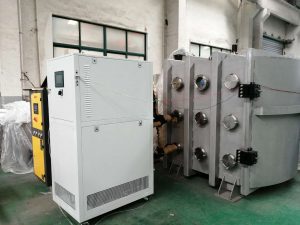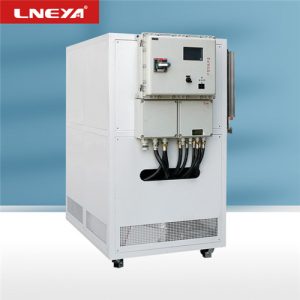グリコールチラーと水冷式チラーの違いは何ですか?
生産時に発生する熱を十分に放散させるためには、グリコールチラーと冷凍機の両方を使用することができる。この2種類のチラーの基本的な違いは、凝固点と熱伝達能力の違いである。...
Pure ethylene glycol or a mixture of ethylene glycol and water has a much lower freezing point than pure water. This means that glycol-based chillers are better suited for low-temperature environments. In contrast, water has a better ability to retain and conduct heat in the associated process than glycol mixtures. As a result, the heat transfer efficiency for water chillers will be higher than for glycol chillers.
Water: Using water as a coolant is an economical method as water is readily available at minimal cost in most cases. Alternatively, purified water (deionized water, reverse osmosis) can be used in water-based chillers for greater cooling efficiency.
Ethylene Glycol: Ethylene glycol-based coolants consist of either ethylene glycol or propylene glycol. Although the two variants have similar physical properties, they should never be mixed. The main benefits of glycol coolants are improved corrosion resistance and freeze protection.
Why use ethylene glycol for cooling?
Using a glycol-water mixture as a coolant has several advantages over using plain water as a coolant. These advantages are due to its unique physical properties, which include a lower freezing point than water.
関連推奨品
-
The relationship between vocs adsorption condensing equipment price and configuration
972The quality of vocs adsorption condensing equipment must be guaranteed. This can be used with confidence. The reason for the power consumption may also be that the gas inhaled by the BITZER compressor allows a certain degree of superheat, but the ...
詳細を見る -
New energy testing method and application case of temperature simulation thermostat
939LNEYA new energy vehicle battery high and low temperature cycle test is one of the most widely used equipment in modern vehicle battery testing. Lithium battery is one of the more common batteries. What should be paid attention to when using it? ...
詳細を見る -
Tips for shutting down the industrial chiller for temperature control of the reactor
1056Industrial chillers are equipped with a wide range of accessories and equipment. In actual use, it is necessary to provide regular rest time for industrial chillers. In order to maintain stable performance during long-term operation, users need to...
詳細を見る -
グリコール・チラー・システムの冷凍原理とは?
1248Glycol Chiller System , as we can tell fromits name, it is to use Glycol as the refrigeration agent for the chiller. In the all air environment, because of thelow temperature in the outdoors, it is impossible to use a cooling tower tosupply t...
詳細を見る
 LNEYA工業用冷凍機 メーカー サプライヤー
LNEYA工業用冷凍機 メーカー サプライヤー














